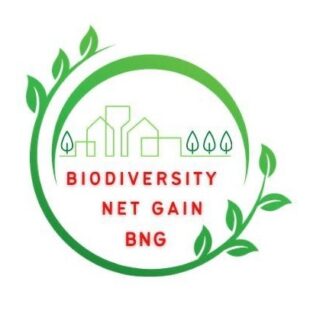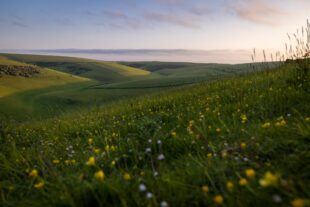 The introduction of biodiversity net gain (BNG) today (12 February 2024) will see the biggest change to planning regulations in decades. This new law as part of the government’s Environment Act will make sure wildlife habitats are left in a better state than before development, and in doing so make a significant contribution to nature’s recovery.
The introduction of biodiversity net gain (BNG) today (12 February 2024) will see the biggest change to planning regulations in decades. This new law as part of the government’s Environment Act will make sure wildlife habitats are left in a better state than before development, and in doing so make a significant contribution to nature’s recovery.
In November 2023, Defra published BNG guidance on GOV.UK to help local planning authorities, developers, landowners, and others prepare. It tells you everything you need to know now BNG has become law.
Looking ahead to the new BNG Service
The Biodiversity Gain Site Register will provide a publicly accessible source of information about off-site gains across England. Natural England is the ‘Register Operator’ on behalf of Defra. The Register is one part of the BNG Service which went live when BNG became mandatory. The Service includes a collection of new digital and other services local planning authorities, developers, landowners, and others will need to be BNG compliant.
Getting BNG ready has been a real team effort. We have worked closely with our stakeholders to develop, build, and test the guidance and digital services needed to help those affected comply with BNG once launched.
More than 275 hours of user research has been carried out in the past 26 months. We have worked closely with over 580 stakeholders including local planning authorities, developers, landowners, ecologists, and others.
We want to thank every stakeholder who has taken part. Their passion and willingness to share knowledge, expertise and most importantly their time has helped us develop better guidance and services for those who will need to use them from day one.
What does the service provide?
Gain Site Register (digital service)
The Gain Site Register enables:
- Landowners participating in off-site BNG to apply to register their site
- Developers to view unallocated off-site habitat enhancements
- Local planning authorities to view allocated and unallocated habitat enhancements as part of their checks on a submitted gain plan
Others using the Register will include ecologists, non-governmental organisations, and the public.

Allocations (downloadable pdf application)
Landowners or developers (with landowner permission) can apply to record an allocation of habitat enhancements to their development.
Statutory biodiversity credits estimator (digital service)
Developers can calculate the cost of statutory credits ahead of purchasing them.
Statutory biodiversity credit sales scheme (downloadable pdf application)
Developers can apply to purchase statutory credits. This will become a digital service in the spring of 2024.
Statutory biodiversity metric calculation tool (MS Excel)
The Tool uses a habitat-based approach to assess an area’s value to wildlife and uses habitat features to calculate a biodiversity value. Find out more about the tool and how to download.
It provides details on how:
- Ecologists or developers can carry out a biodiversity assessment
- Developers who have commissioned a biodiversity assessment can see the number of biodiversity units a proposed development has and what needs to be done to achieve BNG
- Planning authorities can interpret metric outputs in a planning application
- Landowners or land managers who want to provide biodiversity units from their sites to others can understand the potential of their land
Support when you need it
Dedicated teams will also be in place to provide support where needed including an assisted digital service for those who have difficulty accessing information online.
Some parts of the Service including the Register are fully digital today, on day one. Others will become digital in the coming months. We will provide updates on any changes.
Launch is just the beginning of the BNG journey. Our guidance and digital services will improve as they are used, and new digital services are launched. During this time, we will continue our user research with stakeholders.
Want to know more?
If you or anyone you know would be interested in giving feedback on the digital services being developed, please feel free to complete our expression of interest form. We want to hear from developers, landowners, and their representatives.
It would be great to hear from those building smaller housing developments, farmers with smallholdings and anyone who does not use or has trouble accessing the internet.
6 comments
Comment by David posted on
I have spent the last 40 years falsely believing that all companies were responsible for their own mess and always had to clean up their own waste & return the land to it's natural state, as any decent human being would do.
But these are not human beings, they are a board room full of directors, shouting down and belittling the skilled engineers that they underpay, continually making choices that only financially advance their shareholders & destroy any hopes of underpaid employees!
It's only when you leave school, and do your own research, learn the hard way, that you find that the government has been lying to us for the last few hundred years.
After 25 years of engineering the only thing i've learnt is that I should of become a liar if I wanted to progress in this Country!
Comment by Kim Olaolu posted on
If you are developing green belt, green fields , grass land. Then it's impossible to leave it better than before. It's. Nonsense. You're building in the land taking flora and fauna along with it. Building on wildlife habitat. You can not mitigate that loss. Once it's been built on it's lost forever. What should happen is complete protection of woodland green belt and wild places . Preservation, protect not build upon. We are turning England into a concrete jungle. New housing developments could do more. Have small woodlands planted , compulsory mixed row hedging,sub dewed lighting for wildlife. Bat, bird bee box installation. Wildlife friendly back garden fencing incorporating toad and hedgehog highways.
Comment by Mr Paul Healey posted on
Can you do a youtube Google to show stakeholders and the public examples of the ideas that have been implemented or used as examples for this project,so far.
Comment by Nigel Goodhew posted on
We need to grow more of our own food!! Not import it!! From a third generation fruit farmer, who has been forced out of business. You are taking more land out of production, when the world is struggling for food, I don't understand it.!its a mistake.
Comment by Olive Gibson posted on
So glad this is now law. Halgavor Moor in near Bodmin Cornwall is a Biodiverse wetland/floodplain which is in dire need of protection asap. We the people of bodmin have objected ceaselessly to prevent Wain Homes from destroying this wildlife habitat but despite all the public meetings etc Wains representatives did not attend last meeting.If this area is destroyed we will never recover it.
Comment by Mike Priaulx posted on
This blog contains an incorrect statement in its opening paragraph: "...will make sure wildlife habitats are left in a better state than before development". Although in some cases this is true, it is just not true at all that it "will make sure" habitats are improved because all the habitats that are not given value by BNG are not protected at all by BNG. Buildings in particular, so the homes of bats and red-listed bird species such as house martins, house sparrows, starlings, swifts, swallows, and barn owls; existing nest sites of sand martins are not protected; routes for hedgehogs and other fauna etc.
Sometimes other legal protections may assist but in many cases they won't.
There are clearly gaps in BNG which would be OK if they were acknowledged and dealt with, but it's very frustrating that all the documents published so far have been totally silent about them, and even worse that publications are being misleading to suggest that these gaps don't exist.